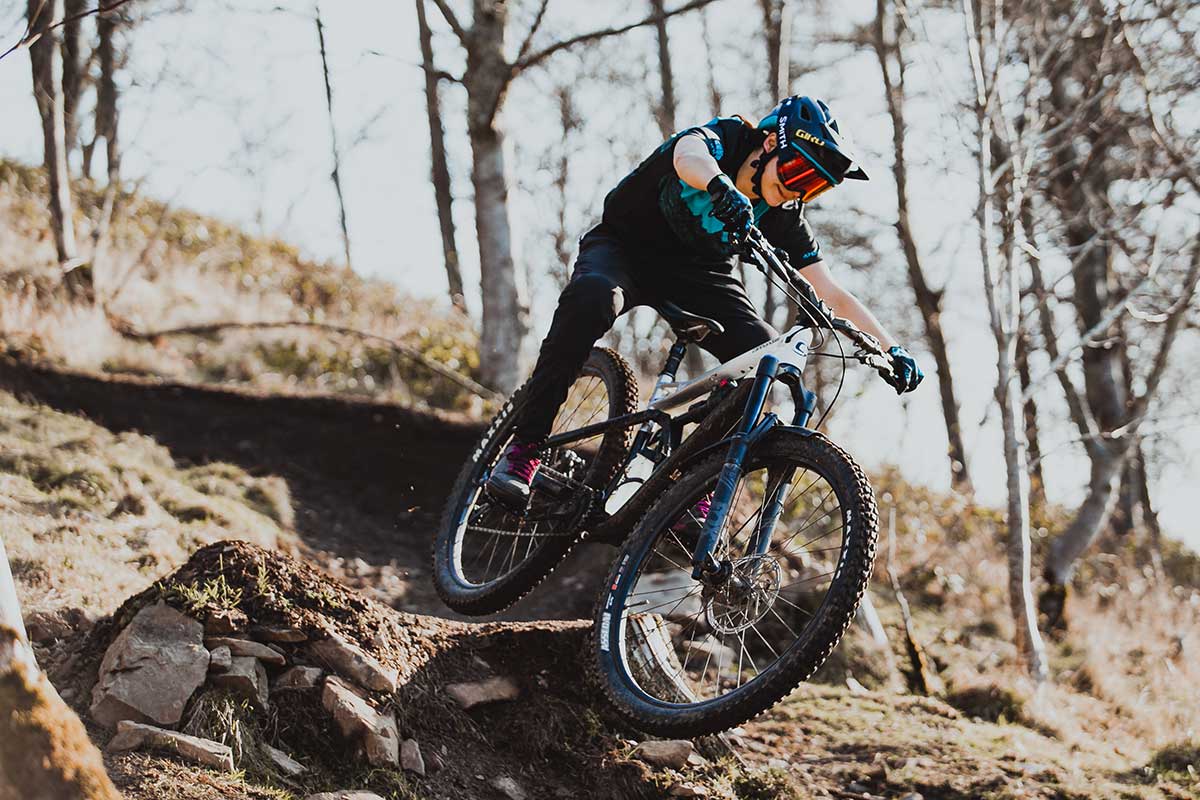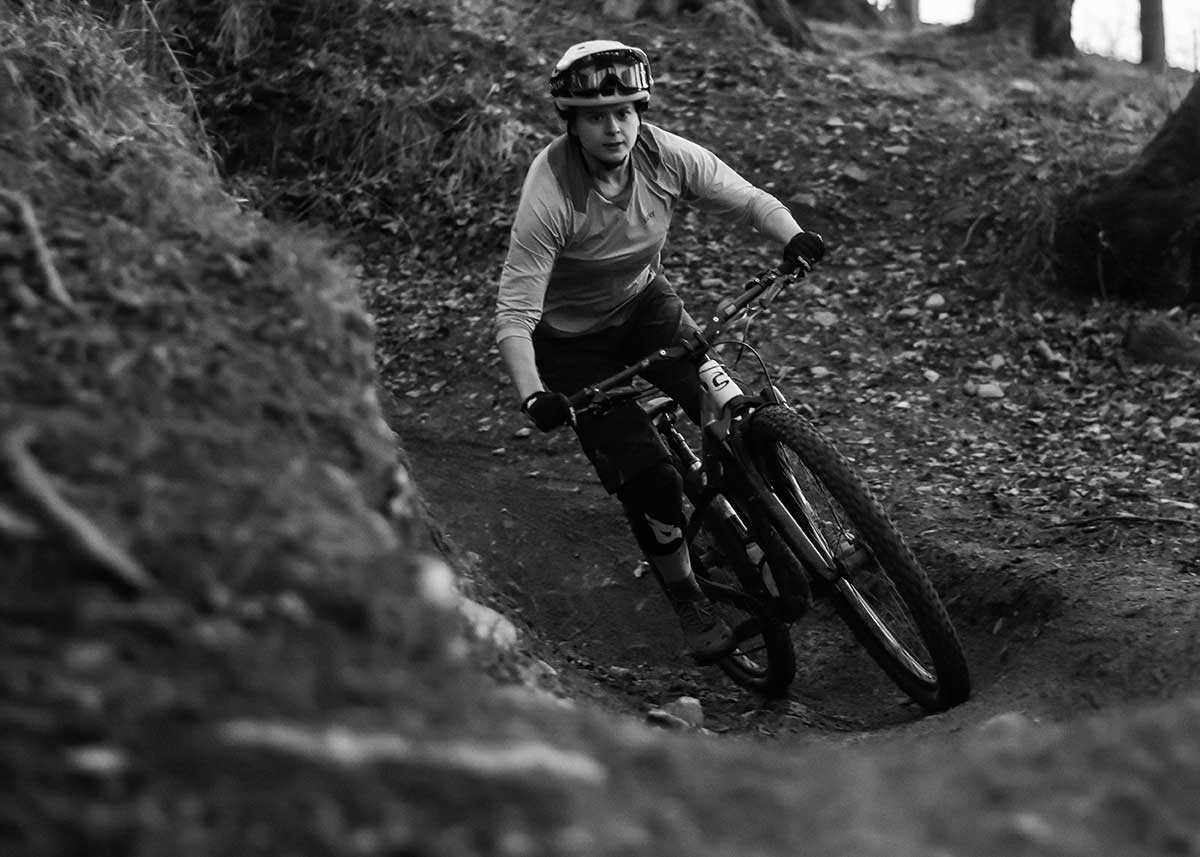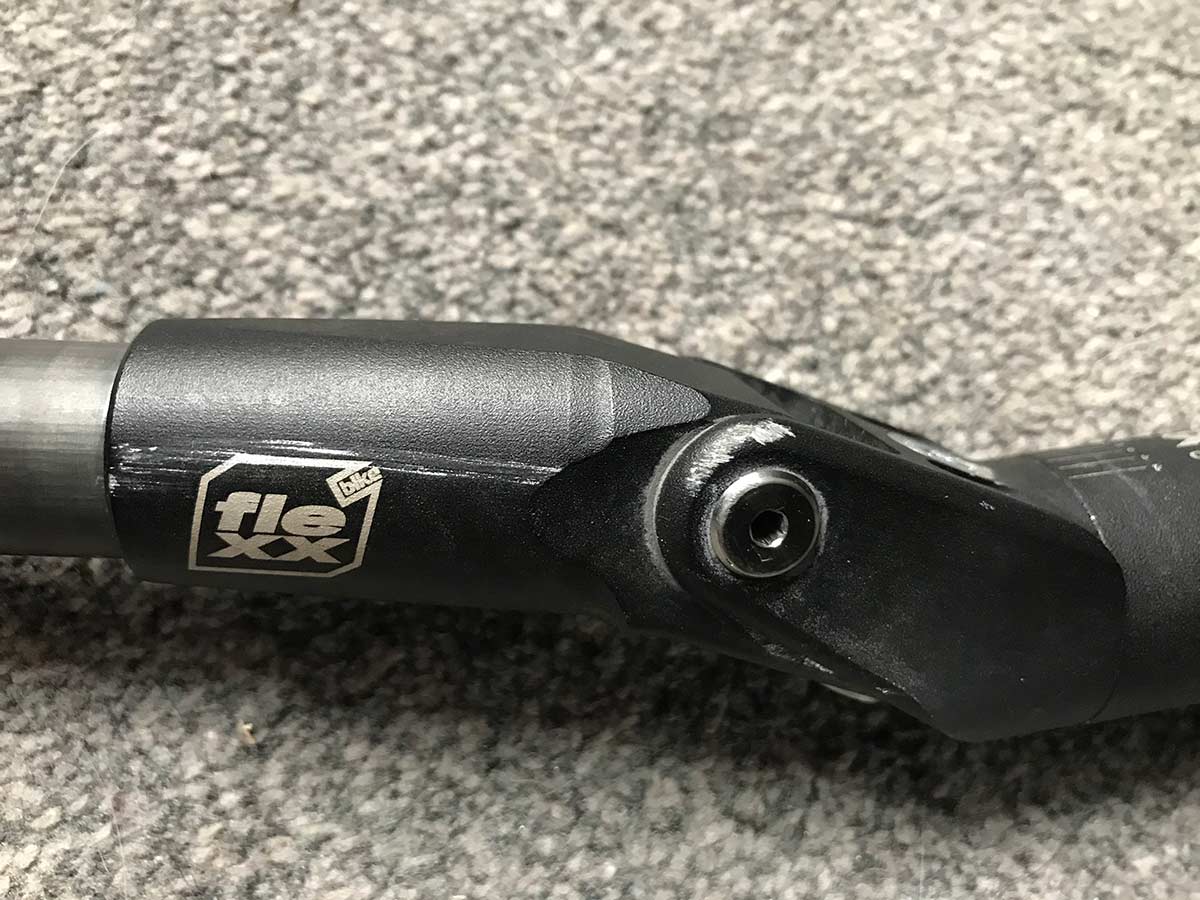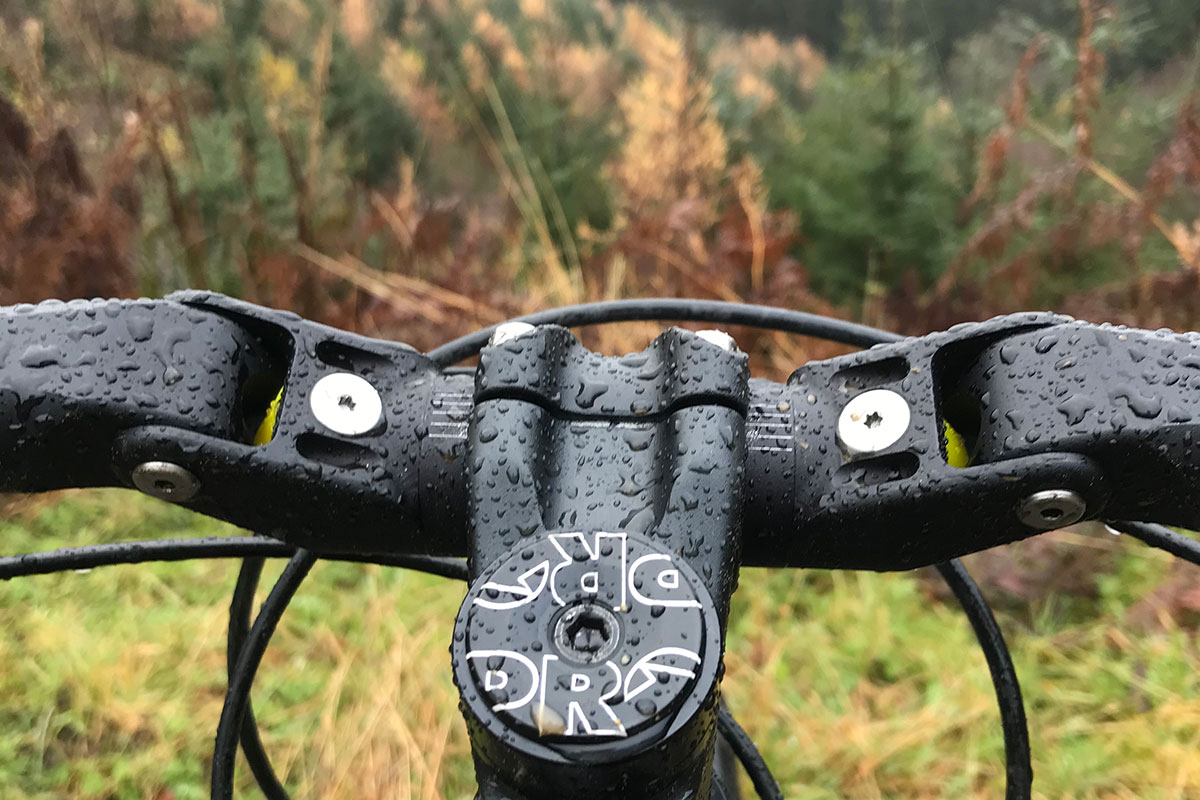Chances are, you’ve clicked on this review article exclaiming “Bendy bars! You couldn’t pay me to ride those!”. OK, I get it. My initial reaction to the Fasst Flexx Enduro Bar was mild horror, too. The thought of your handlebar being anything but completely stiff will be massively off-putting for a lot of riders. Especially those who think they might be a bit on the heavy side, or ride very aggressively.
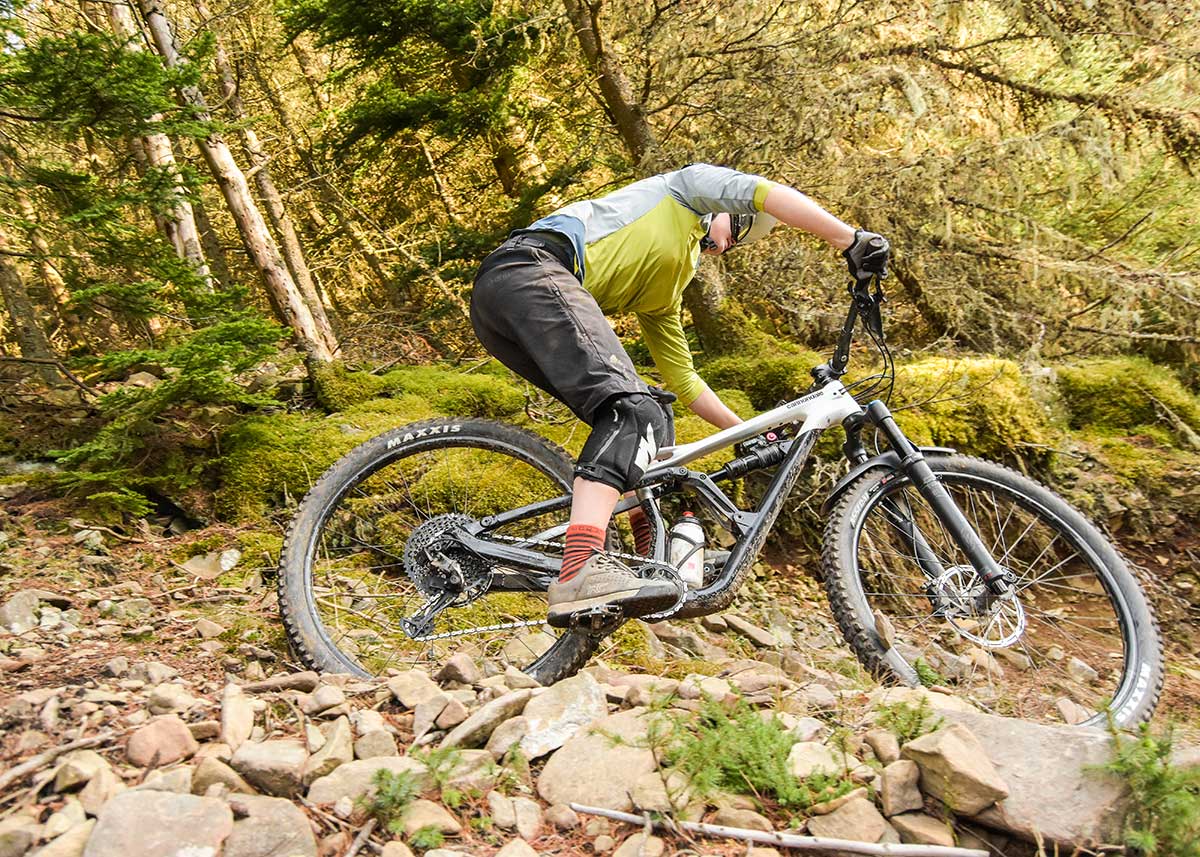
I’ve put this bar through the most rigorous testing I know how to. Fasst Company are based in Utah where trails are dry and dusty for the vast majority of the season. I’ve been riding through a Scottish winter, and a (so far) wet summer. Rain, mud and general filth is the norm. I’m stoked to share my experience with you guys.
Review: Fasst Flexx Enduro Bar
I’ll dive in first with a quick overview of the Fasst Flexx Enduro Bar to give you an idea of what it’s all about, and why anyone would flirt with the idea of a “bendy bar”.
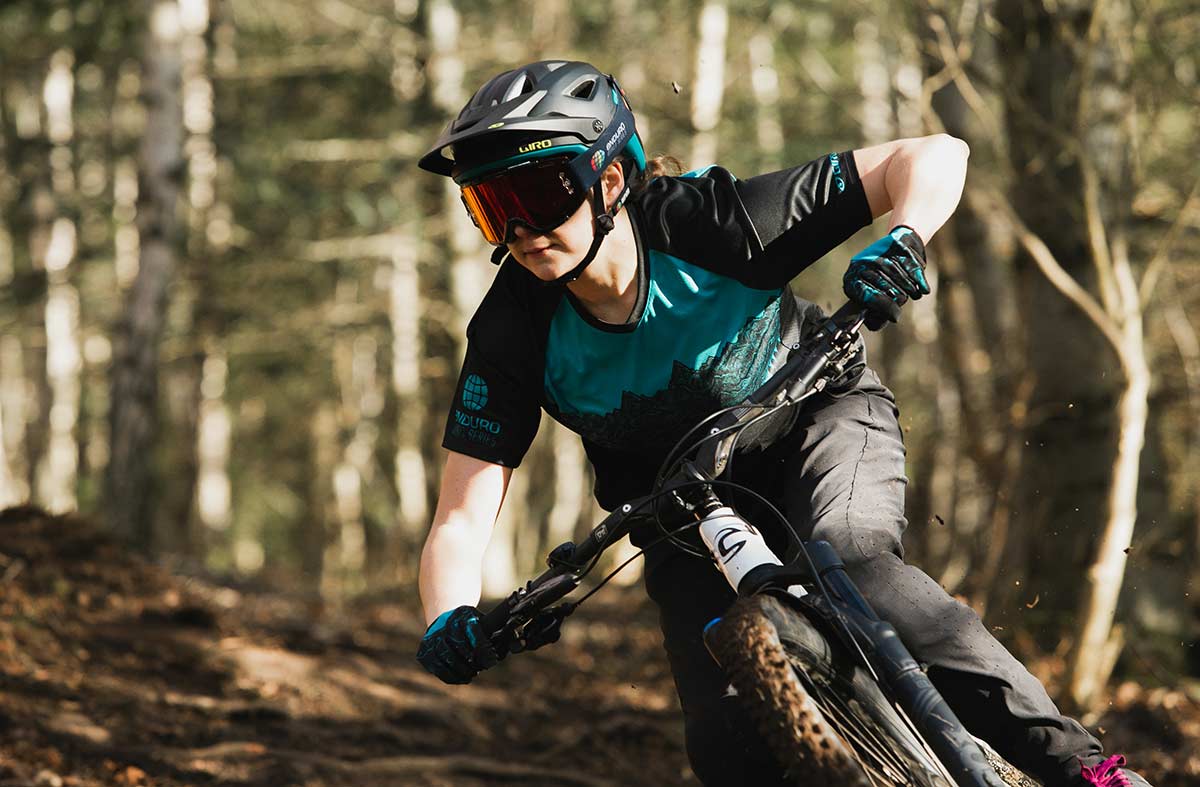
First up, the bar doesn’t actually bend. Each arm of the bar pivots on a bushing, compressing and rebounding between two elastomers. With the Flexx bar, Fasst Co are out to damp vibrations, smooth impacts and reduce hand and arm fatigue.
If you’re someone who suffers with really bad arm pump, or you’ve arthritis in your hand/wrist/elbow/shoulders that gets in the way of your big riding plans, you may be super intrigued around about now. And you’re right to be. My overall experience of the Fasst Flexx Bar has been a good one, but it hasn’t been without its complications… more on that later.

Fasst Co offer the Flexx Enduro Bar in two models – an 8 degree backsweep and a 12 degree backsweep. The 31.8 mm clamp area is 7075 aluminium, and measures 63 mm across. Beyond the pivot area with its titanium bolts and elastomers lies the grip region composed of a uni-directional lay-up of carbon fibers.
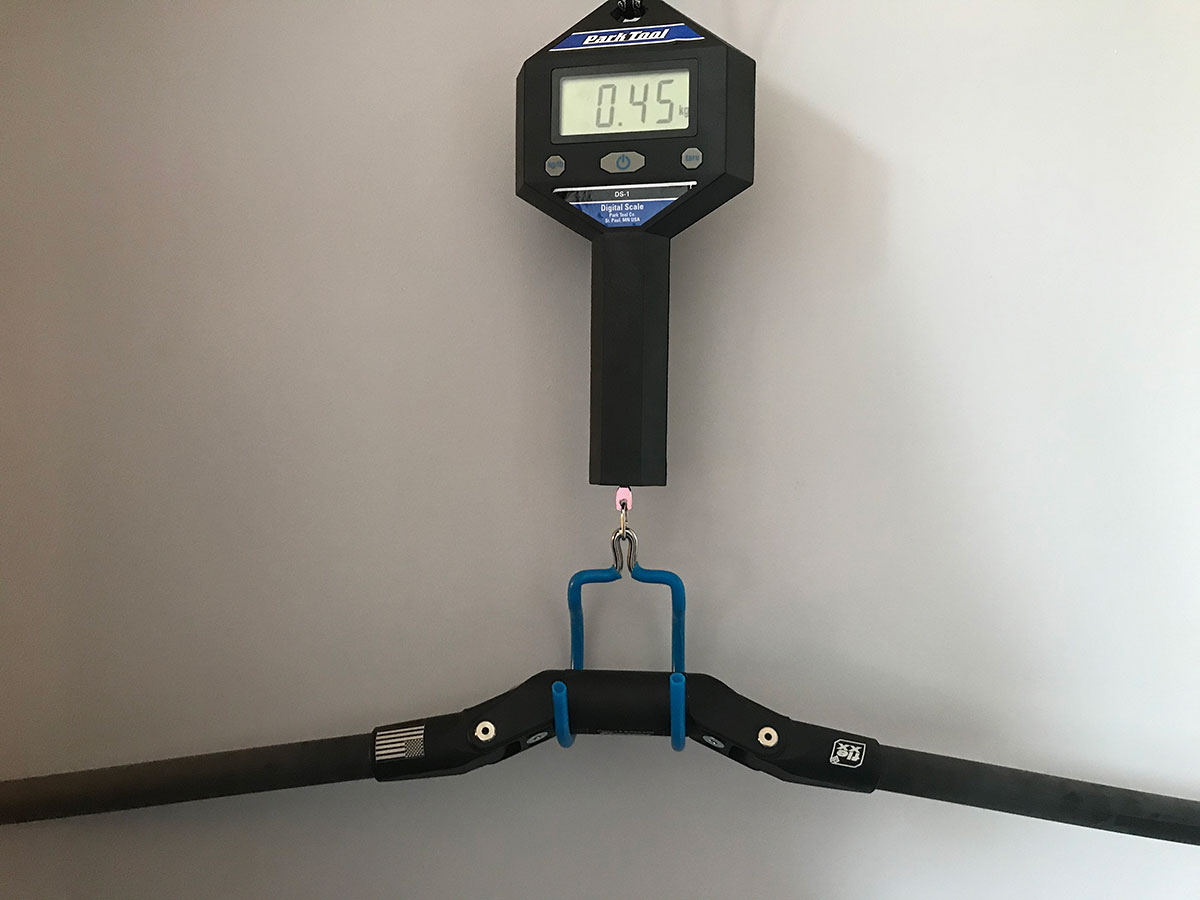
The bar is shipped at 800 mm wide. Fasst Co also offer a Downhill version of the bar. The only difference between the two is that the DH Bar is shipped at 810 mm and has a wider stem clamp area (73 mm) to suit direct-mount stems. Both are priced at an eye-watering $424.99.
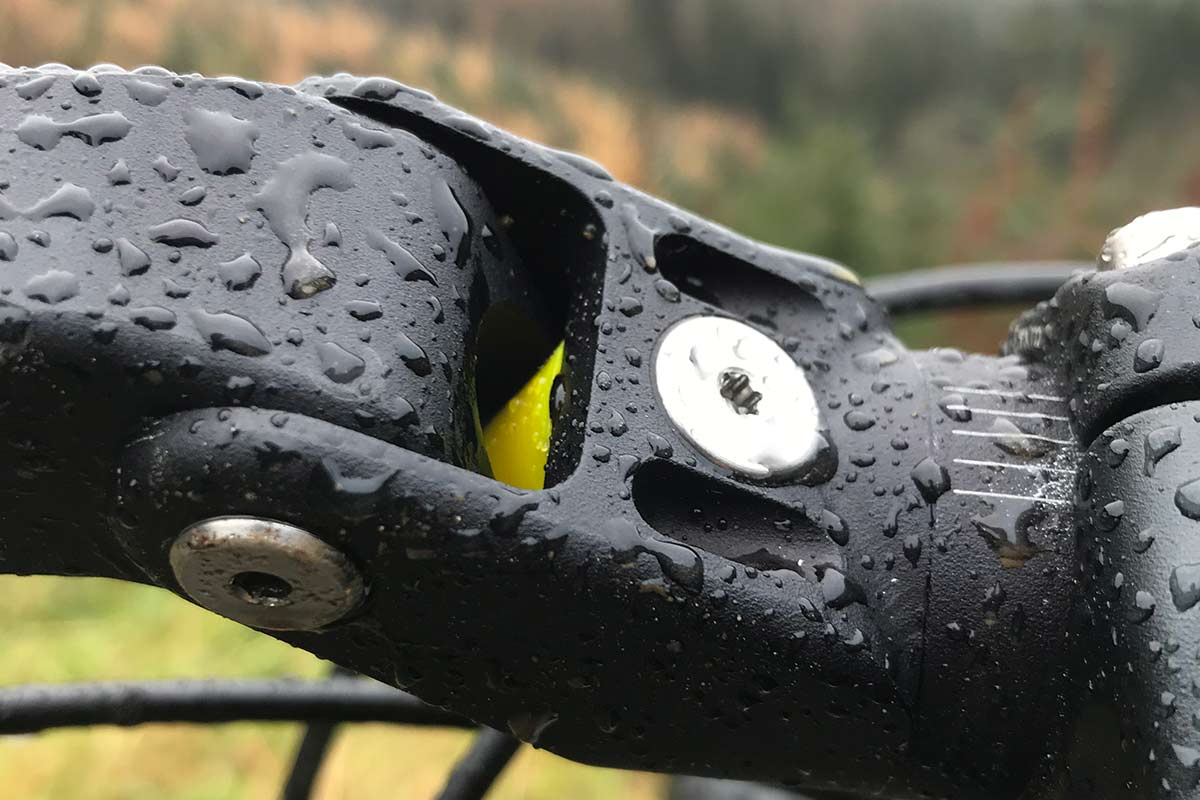
Fasst Co provide four sets of compression and rebound elastomers with each bar – soft, medium, hard and extra-hard, so riders can tune the flex to suit their riding. Throughout the review period, I’ve tested the soft, medium and hard options.
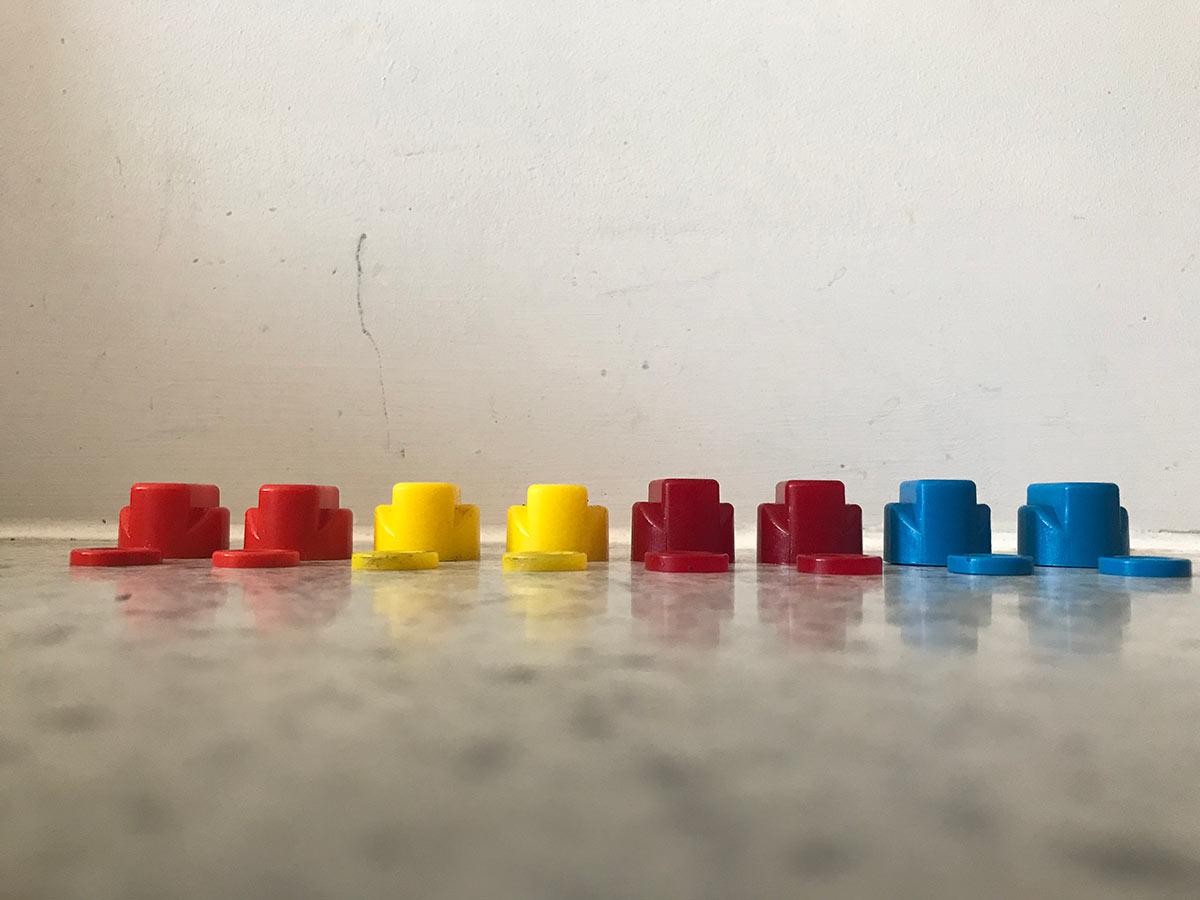
So how do they actually work? Each type of elastomer varies in height – this, along with the varying durometers, is what helps give rise to the difference in firmness and ride feel. Every elastomer combination will produce an upsweep of 5 degrees. When properly installed, all the elastomers take up the same space within the pivot area thus, the pre-loads are different depending on the height of the elastomer.
First Ride Impressions
It’s been nine months since I first mounted Fasst Company’s Flexx Enduro Bar to the bike. It steered my Trek Slash initially, then was transferred to my Cannondale Jekyll 29er with a 150 mm travel fork.
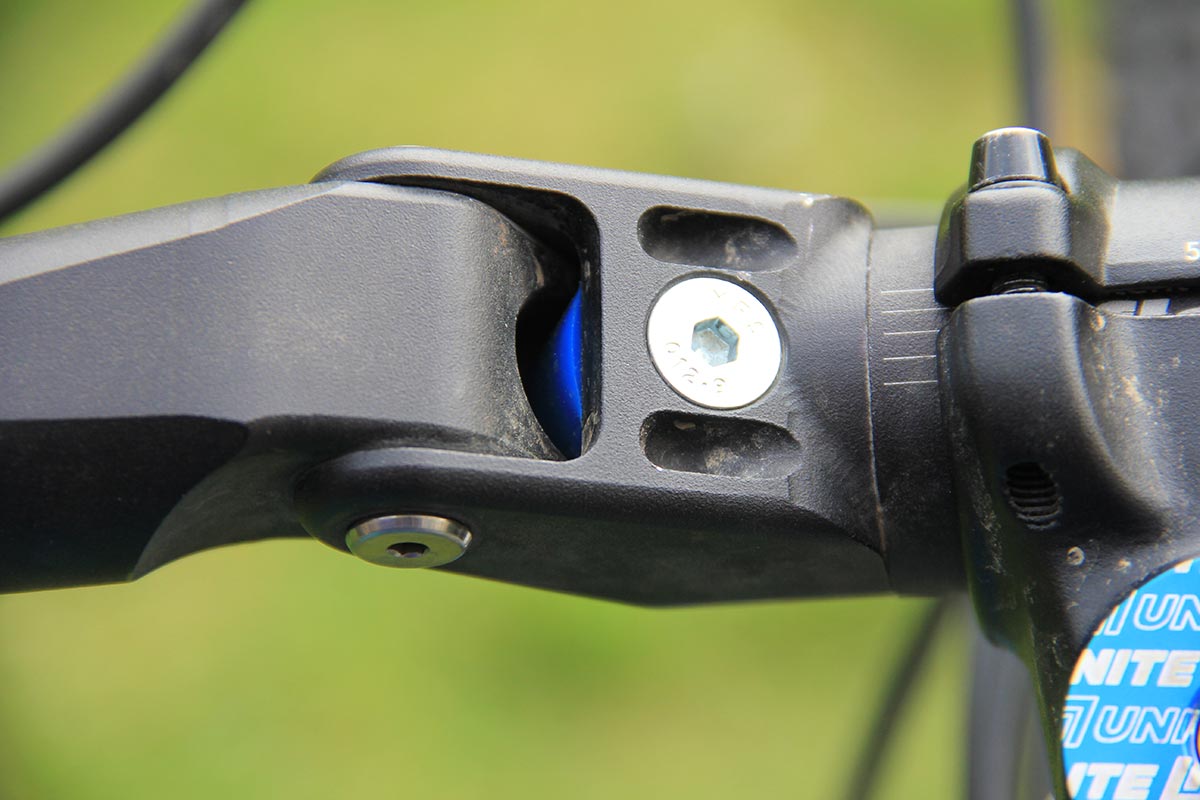
I cut them down to 740 mm and did one trail ride with the yellow elastomers. My initial thoughts were that they were just too hard, and I didn’t notice any flex at all. Almost immediately I swapped out the hard compression and rebound elastomers for the softest ones. The flex was immediately noticeable when pushing down on the grips – even from stopped.
Note: In the above video, the Flexx Bar is fitted with the medium compression and rebound elastomers. You might notice that while the bar ends flex, the bolt system “floats” within the cavity. While it may look unsettling, it’s not a concern as the bolt is a limiting stop more than a fastener. Here’s a close-up of the “floating bolt system”:
Admittedly, I was a bit nervous. I rode my first trail – a fast, rocky, loose trail with big berms, albeit with tempered pace. Now, I don’t mean to sound sensationalist, but I actually rode out of the exit exclaiming “wow”. The flex was noticeable just about the whole way down the trail – arm pump was not.
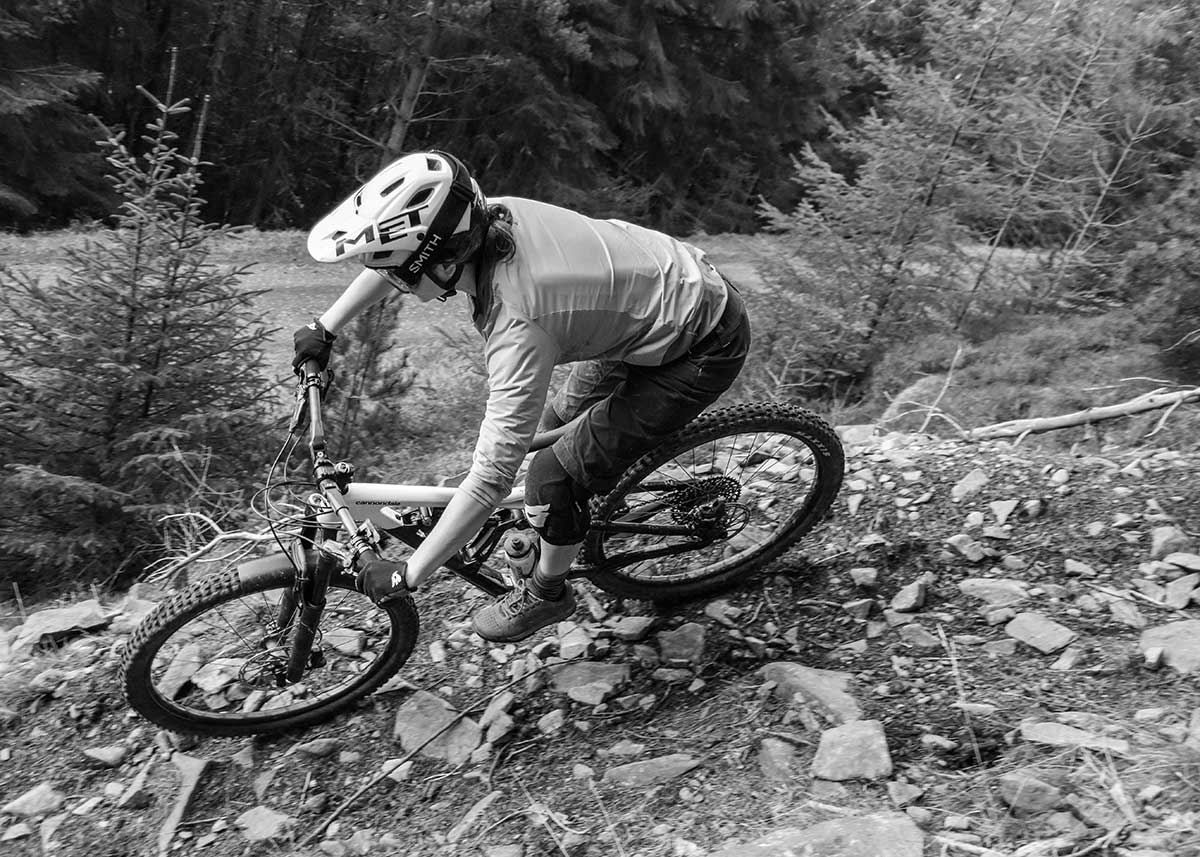
It was particularly apparent through the rough rocky sections of trail, and over small drops. You can plainly feel the grips dip under compression and come back up to the normal position. I was impressed.
And I was stoked with the complete lack of arm pump. It was only a 2.5 minute trail, granted, but I normally get at least some hand and arm fatigue even on a short descent like that.
I spent a good few weeks riding the Flexx Enduro Bar with the soft compression and rebound elastomers. With more ride time, my initial enthusiasm for the bar faded, as I started to notice the handling compromises that come with the flex.
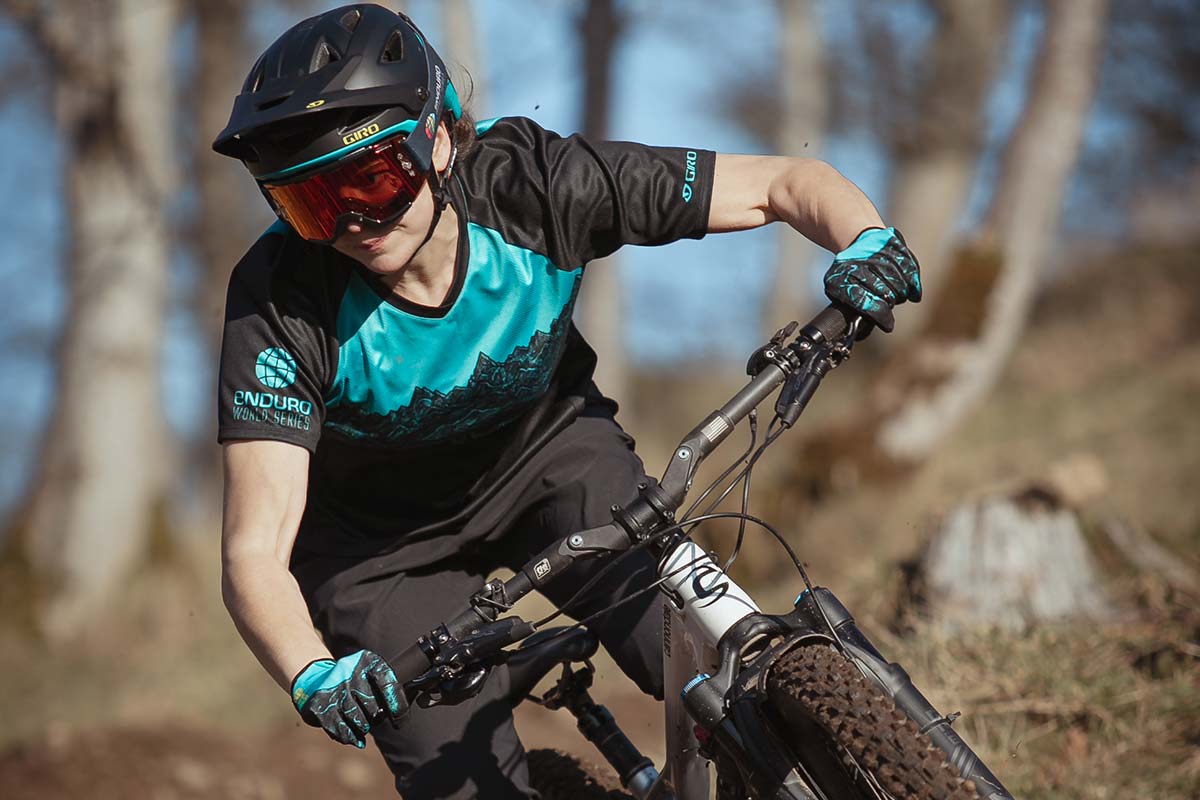
One of the biggest issues with handling was the dramatic flex of the bar under harsh braking. This made the front end handling feel super vague. I would lose perception of where my weight was centered over the bike as the bars flexed under braking or in the compression within turns – this was a pretty unsettling sensation.
I quickly realized the soft elastomers were not suited to my riding style. Then something weird happened…
Differential Flex
It later became apparent that one side was flexing more than the other! This wasn’t a differential weight distribution thing – I noticed it most while riding fast straight-line sections of trail and over small drops. I got in touch with the guys at Fasst Co on this issue…
They said that the process by which they make the elastomers sometimes results in elastomers of differing heights – 16.5 mm and 16.75 mm. Fasst Co sort them accordingly to ensure riders end up with a pair that are the exact same height. It is possible there was an error with the sorting at some point and I ended up with one 16.5 mm and one 16.75 mm.
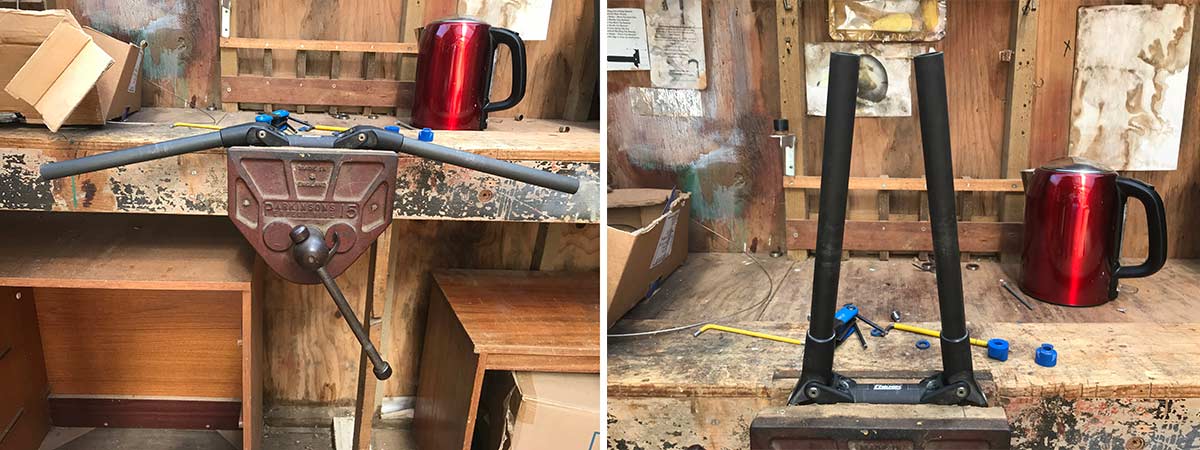
I switched the soft ones out for the medium ones. A T25, 4 mm Allen and blue loctite is, theoretically, all you’ll need to replace the elastomers. It can be super tough to loosen the bolt system initially so I found it useful to have a second pair of hands to hand and a vise – compressing the bar a little made it easier to loosen the bolt system.
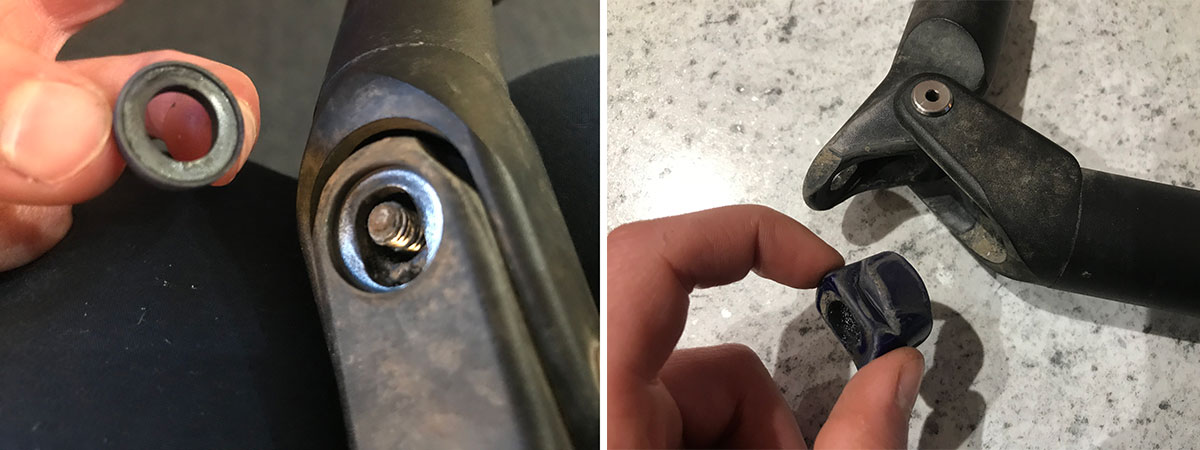
Turns out I had applied Loctite to the retainer bolt with a little too much enthusiasm. A friend ended up drilling out the bolt system on one side just to get the elastomers out. Just to be confusing, these medium elastomers were also blue – Fasst Co had sent me their “new” medium elastomer to test in place of the original red one.
Non-Pro Tip: use loctite sparingly. If you do use too much, heat the bolt with boiling water or a heat gun to loosen the loctite. Don’t drill it out.
Handling was marginally improved with the medium elastomers. I still had the benefits of reduced hand and arm fatigue while riding trails but the handling issues remained, albeit less so. They were definitely more firm but still flexed under harsh braking and in turns.
Worn bushings
While riding with the medium elastomers, front to back play developed at the pivot, indicating the bushings within it had become worn. Fasst Co said this could only have happened if the 3 mm hex pin end-cap was removed or had fallen out. This would have exposed the bushing and may have caused that to move or come out entirely too.
They also said “If the pin end cap stays in tact, the service interval could be up to 1000+ miles, depending on conditions and application“.
I can confirm that the 3 mm hex pin end-cap was never removed throughout the review period, neither purposely or accidentally. We’ll have to put the wear down to riding six days per week through the slop-fest that is winter. It’s also possible that a few crashes may have dislodged some of the internals – it looks like the right hand side of the bar certainly took a bashing at some point.
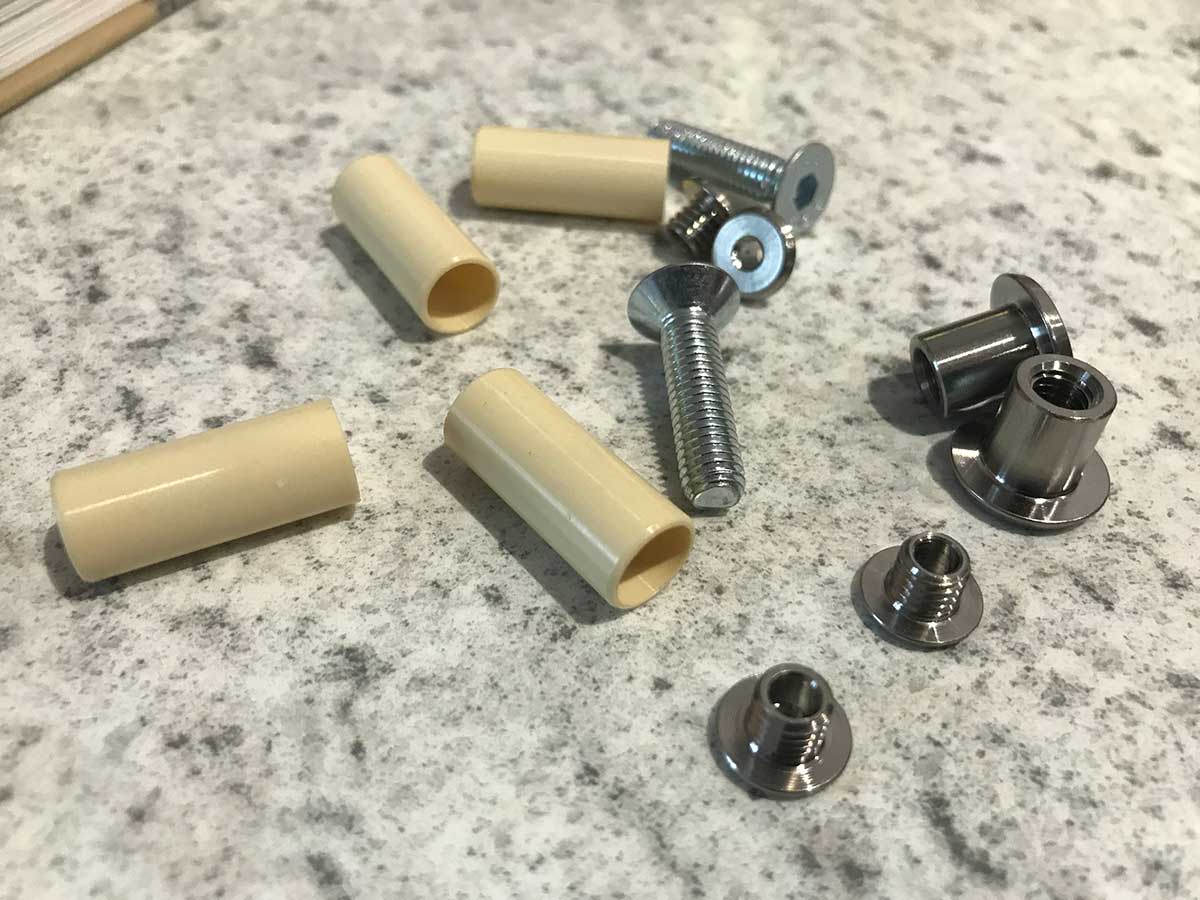
Fasst Co said this issue of worn out bushings was not something they expected their customers to deal with so instead of asking me to replace them, they sent out a new bar. Cyclorise, a UK Distributor, have recently taken on Fasst Co, so we expect there will be a lot more customers riding Flexx bars in testing winter-like conditions soon.
Hard elastomers is where it’s at
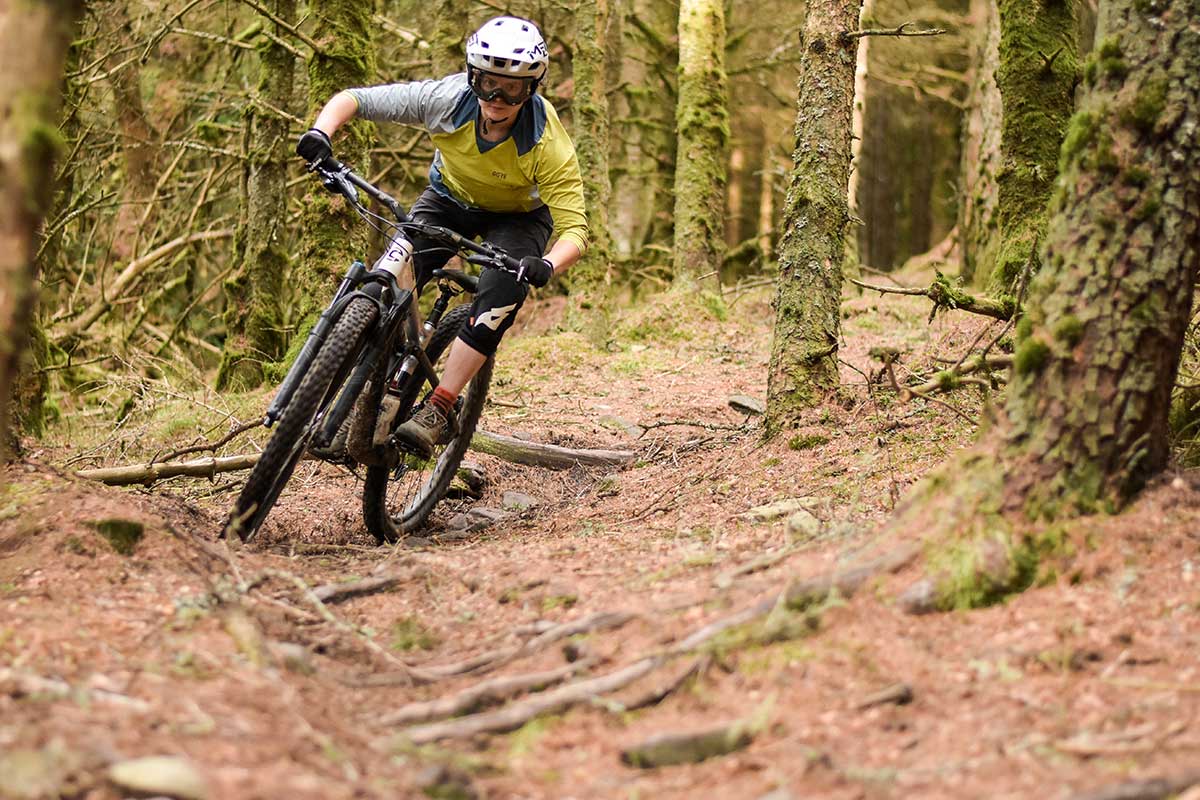
This new bar was fitted with the yellow “hard” rebound and compression elastomers. This is the set-up I’ve been riding for the last 6 weeks and so far, i’m pleased to say it has been problem-free.
As for ride feel, I 110% prefer the more supportive feel of the hard elastomers, as compared to the medium or soft ones. I no longer experience that “diving” sensation under harsh braking or in fast corners. Handling isn’t compromised at all.
That said, arm pump has made a comeback, albeit at a greatly reduced level than what I experience on a completely solid bar like a 35 mm clamp alloy. The Fasst Flexx Enduro Bar does work as it was designed to. It takes the edge off big hits, smooths out the rough feedback you get from the trail, resulting in reduced hand and arm fatigue. I like them a lot.
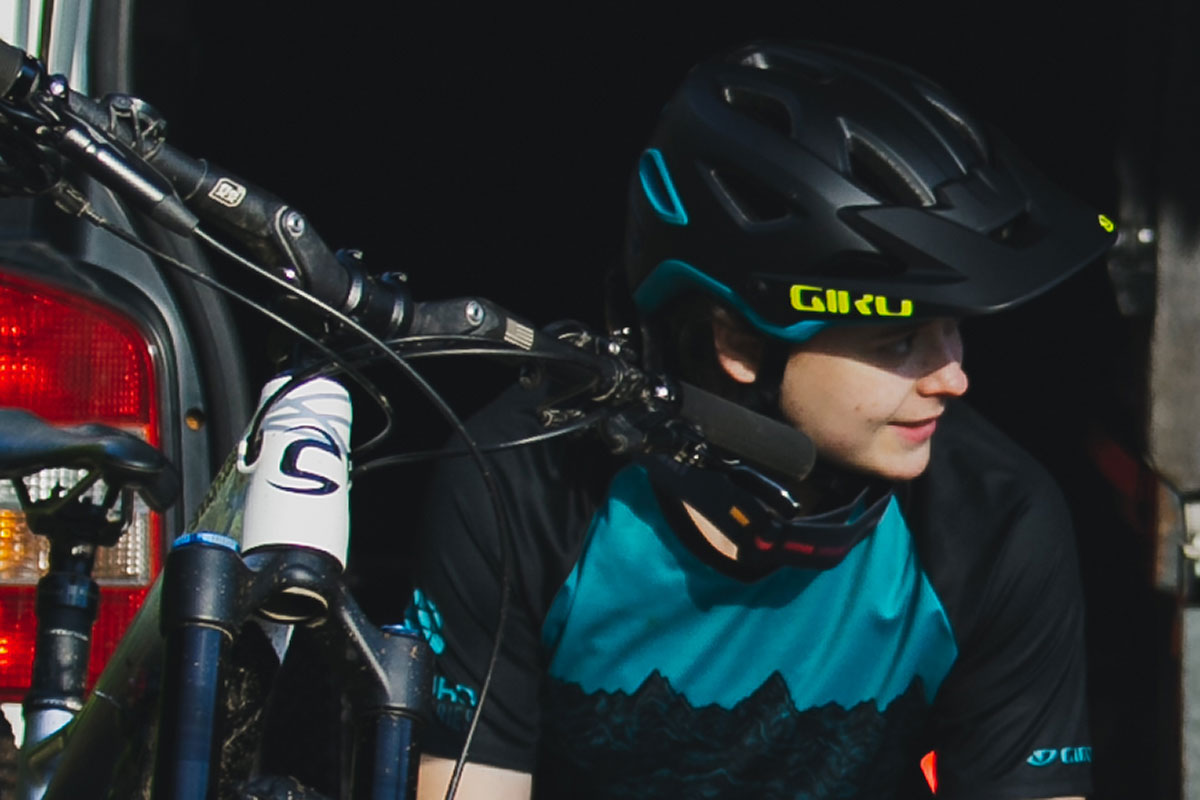
The difference in firmness between the medium and hard elastomers is like night and day. Though I have settled on the hard ones due to the improved handling characteristics, it would have been interesting to test out an elastomer with firmness somewhere in between the medium and hard ones as the difference in firmness is vast. It’s worth pointing out that at 60kg, needing the hard elastomers might mean that much heavier riders may find the extra hard elastomers too soft. But that all depends on the rider, their riding style, and preferences.
Fasst Flexx MTB Bar: The Bottom Line
Fasst Company’s Flexx enduro handlebar takes the concept of a “comfort handlebar” to the next level. Despite the consistency and durability issues I encountered throughout the test period, I’d be happy to recommend this bar to those looking to reduce arm pump and upper body fatigue on long descents thanks to the excellent customer service Fasst Co seems to provide.
Fasst Co have achieved what they set out to do: the Flexx Enduro Bar takes the edge off big hits and smooths the ride making the front end of the bike feel dialed. It’s not a quick fix; likely it will take you some time to get the tune that suits your weight and riding style best but when you do find it, you’ll reap the rewards.
The most import thing for me is that this bar reduces arm pump, allowing me to brake effectively when I need to and ultimately, go faster for longer. However, the price tag of $424.99 is a massive hurdle for most riders, undoubtedly.
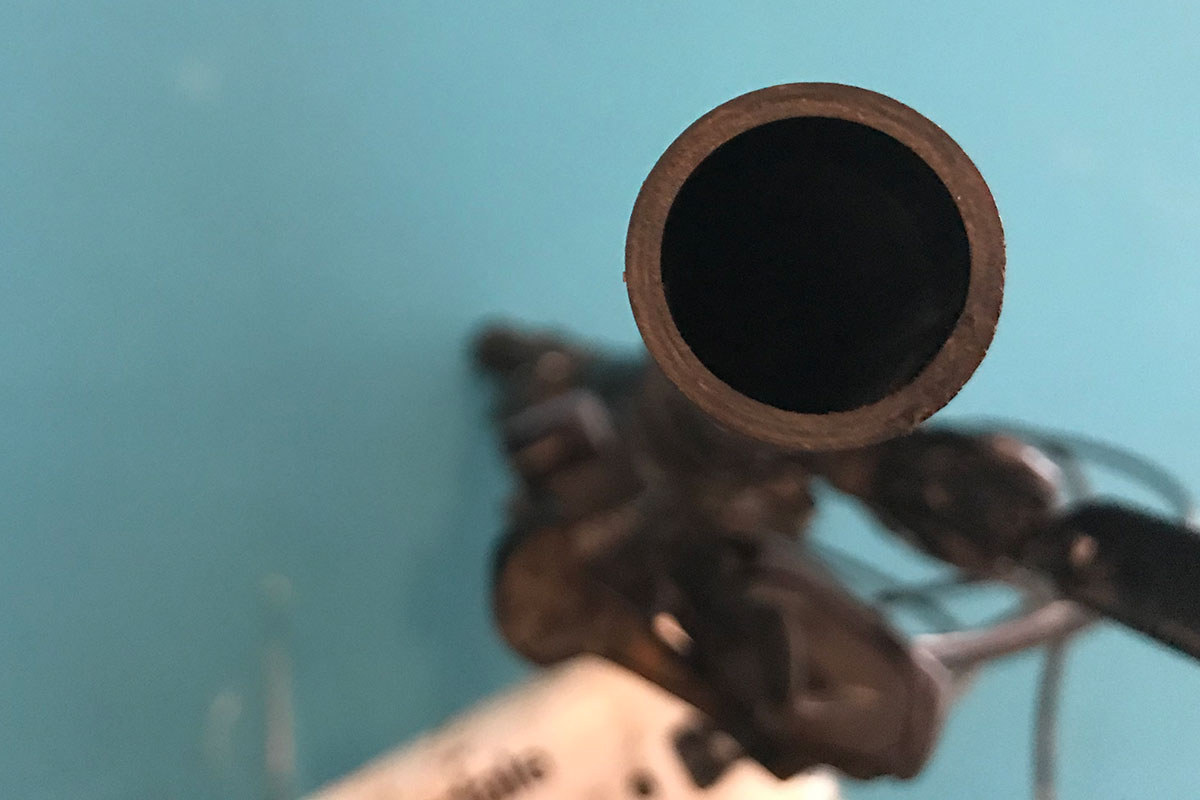
On price (and weight) it is going to struggle to compete with bars that offer compliance such as OneUp’s ovalised carbon bar. Even though OneUp’s offering is good, it can’t compete with the level of comfort offered by the Fasst Flexx Bar – but OneUp is also maintenance free.
Update: We asked the guys at Fasst Co about their choice to use carbon bar ends instead of making a complete aluminium bar. Here’s what they said: “When we started the project several years ago (2015), weight was more of a concern. Now several years later weight is less of a concern if durability, comfort or improved handling is gained as well.”
“Another reason was the cost of getting started. The domestic carbon was available off the shelf with little tooling charges. This allowed us to buy the carbon as needed. An aluminum handle would require a significant upfront mold cost making the cost of entry steeper.”
“We bond the carbon into the alloy, similar to how alloy parts are bonded into carbon frames. We always err on the side of being more burly than not. We want to make sure our carbon can withstand the abuse, hence the reason for the wall thickness”.
“I am happy to report that we are testing a full alloy version. I am currently riding with a 12 degree alloy bar. We’re hoping to bring the retail price down around $300 and have a full alloy version for the people that simply will not run carbon for one reason or another.” – Chris Tidwell, Fasst Co.
Fasst Co’s Philosophy
We know what you’re thinking. “Flexx Handlebars?! What are these?”
We’ve been manufacturing motorcycle handlebars for almost 20 years, the reviews speak for themselves in terms of added comfort, confidence, and performance.
Flexx Handlebars absorb abuse in the load path of the suspension while remaining precise in the steer path. This provides you, the rider, with the precision handling that you’re used to out of a traditional handlebar, coupled with next level abuse reduction.
Our philosophy has always been to minimize the abuse as naturally as possible. You shouldn’t feel your bars move while riding, correct? We agree, but there are a lot of benefits if you do it in an unnoticeable manner, and that’s where our philosophy comes in.
The fact that our handlebar travels in the same plane as the suspension is not by accident or oversight, it’s by design, in an effort to maintain traditional characteristics. Our philosophy demands that we don’t change the characteristic or input of the component for the sake of abuse reduction.
We’ll only build an abuse reduction product that maintains a traditional feel and input. It’s more about what we don’t do, than what we do that helps you have a better day on the bike.
Think of the Flexx Handlebars as independent suspension for your hands, working in the same plane of your suspension to compliment the feel of the front fork. You control how soft or stiff the bar is.
The movement of the bar is articulating near the plane of the front suspension. A properly set up Flexx Handlebar should feel similar to a traditional handlebar on the trail, but you should feel like the front suspension is tracking better and notice less abuse at your hands and upper body throughout the ride. That’s not magic, that’s years of testing and development at play. That’s our philosophy. Subtle, yet amazing.
There has been discussion about minimizing abuse in a 360 degree manner. Suspension components are controlled in a precise and consistent manner. In other words, tied to a single plane, not multi directional movement. Multi directional movement degrades feel and adds vagueness in steering and control. We’re not willing to sacrifice control by allowing the bar to move in any direction possible.
With all the movement tied near the same plane of the suspension, adding a Flexx Bar provides increased confidence in the front end. From tracking, to small bump compliance, you’ll notice the bar smoothing the terrain and allowing you to charge obstacles harder, while riding longer with less fatigue.

